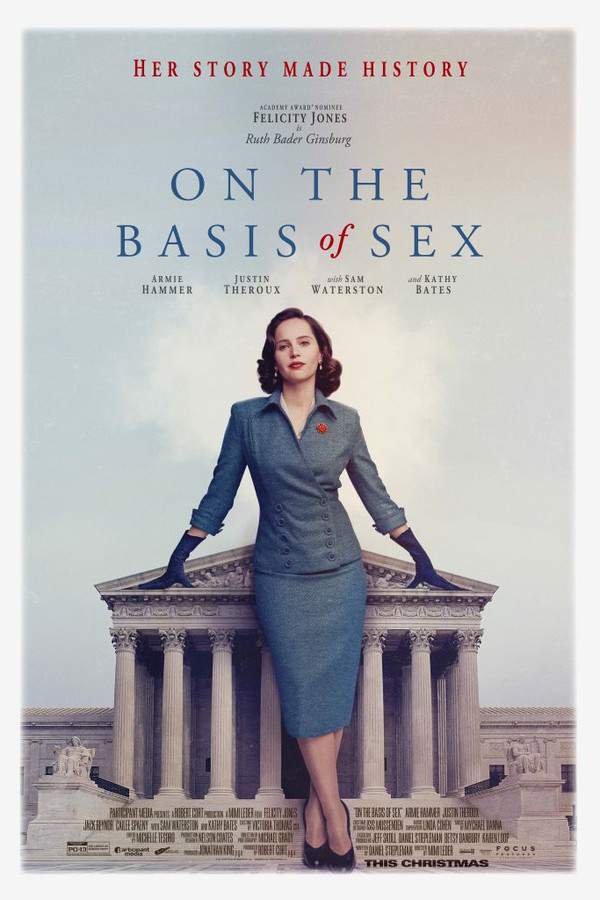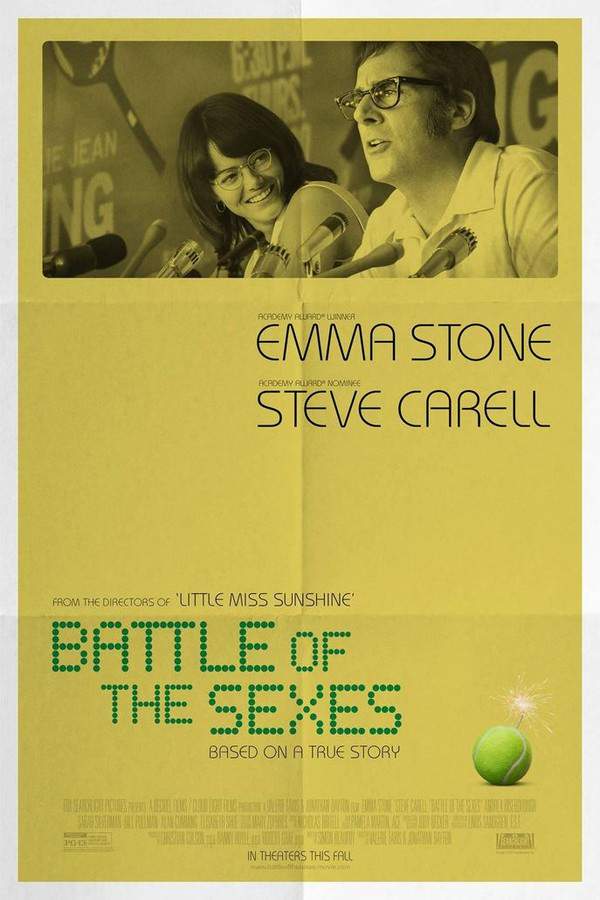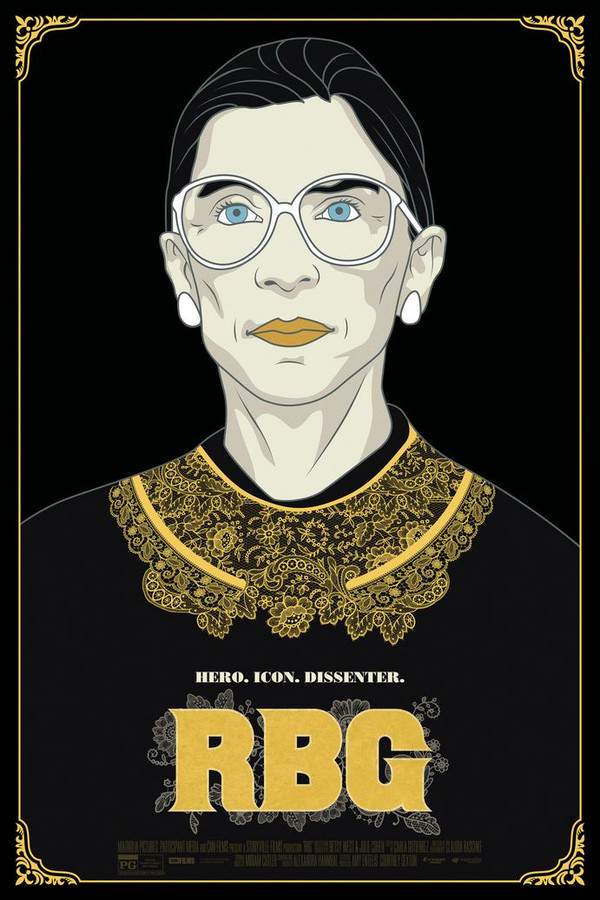
On the Basis of Sex 2018
Directed by

Mimi Leder
Made by
Universal Pictures
Test your knowledge of On the Basis of Sex with our quiz!
On the Basis of Sex Plot Summary
Read the complete plot summary and ending explained for On the Basis of Sex (2018). From turning points to emotional moments, uncover what really happened and why it matters.
In 1956, Ruth Bader Ginsburg, portrayed by Felicity Jones, embarks on her first year at Harvard Law School. While she diligently attends her own classes, she also takes on the responsibility of attending her husband Martin’s lectures, played by Armie Hammer, who is in his second year but has fallen ill due to cancer. Amidst her academic pursuits and caring for their infant daughter Jane, represented by Cailee Spaeny, Ruth shows remarkable resilience.
As the years pass, Martin’s cancer goes into remission, leading him to accept a position at a prominent firm in New York. However, Ruth faces an obstacle when she petitions Dean Griswold, a character portrayed by Sam Waterston, at Harvard to allow her to complete her law degree at Columbia Law School. To her dismay, he adheres strictly to university policies, prompting Ruth to transfer to Columbia instead. Even with her stellar academic performance, she struggles to secure a position at a law firm due to the prevalent gender biases of the era. Ultimately, she takes on a teaching role at Rutgers Law School, focusing on “Sex Discrimination and the Law.”
In 1970, Martin introduces Ruth to a pivotal case: Moritz v. Commissioner, concerning Charles Moritz, portrayed by Chris Mulkey. Moritz, a man who employed a nurse for his aging mother, finds himself denied a tax deduction that was unfairly awarded only to specific categories including women. Ruth seizes this moment to challenge gender discrimination through the legal system, believing that by setting a precedent for a man discriminated against, she can pave the way for future cases affecting women.
Determined, Ruth approaches Mel Wulf from the ACLU for assistance, but he initially declines. After some persuasion from activist Dorothy Kenyon, who transforms from skepticism to support, Ruth inspires Wulf to come on board. She then travels to Denver to meet Moritz, who agrees to allow Ruth and the ACLU to represent him pro bono, understanding the far-reaching implications of their case.
As the legal battle escalates, James H. Bozarth, portrayed by Jack Reynor, steps forward to lead the defense. He meticulously researches gender-related sections of the US Code, presenting a strong argument against the constitutionality of the existing law. Meanwhile, Ruth, lacking courtroom experience, grapples with anxiety during practice sessions. With Wulf’s encouragement, Martin takes the lead in the courtroom, while Ruth argues the equal protection aspects.
Amidst the proceedings, the government presents a meager settlement of one dollar to Moritz, which Ruth counters with a more substantial proposal: acknowledgment of the deduction claim with a declaration about the unconstitutional nature of the gender restrictions. Faced with refusals from the government, the case proceeds to the Tenth Circuit Court of Appeals.
During the oral arguments, Martin inadvertently allocates more time than planned to their position. Nervous yet determined, Ruth utilizes her rebuttal with clarity and conviction, arguing for the urgency to evolve laws alongside societal changes. She asserts, > “Societal roles that existed one hundred years ago, or even twenty years ago, no longer apply.” When challenged regarding the Constitution’s silence on “woman,” she boldly retorts that it also lacks the term “freedom.”
As they await the court’s decision, Ruth, the Ginsburgs, and Wulf share a moment of celebration, recognizing her transformative growth as a lawyer. The narrative concludes with triumphant titles revealing the Court of Appeals’ unanimous ruling in favor of Moritz. Ruth’s groundbreaking work leads to the co-founding of the Women’s Rights Project at the ACLU, dismantling numerous discriminatory laws, and in 1993, she is voted into an associate justice position on the U.S. Supreme Court. The film closes with the real Ruth Bader Ginsburg ascending the steps of the Supreme Court building, symbolizing her legacy in the fight for justice and equality.
On the Basis of Sex Timeline
Follow the complete movie timeline of On the Basis of Sex (2018) with every major event in chronological order. Great for understanding complex plots and story progression.
Ruth's Journey Begins
In 1956, Ruth Bader Ginsburg embarks on her academic journey as she starts her first year at Harvard Law School. Despite the challenges ahead, she is determined to succeed while also managing her family responsibilities, highlighting her remarkable resilience.
Caring for Martin
During her first year, Ruth also takes on the responsibility of attending her husband Martin's lectures as he battles cancer. This dual commitment showcases Ruth's dedication to her family while pursuing her education.
Martin's Cancer Remission
As the years progress, Martin’s health improves and his cancer goes into remission. This recovery allows him to accept a promising position at a prestigious law firm in New York, shifting their family dynamics and aspirations.
Transferring to Columbia
Facing obstacles at Harvard, Ruth petitions Dean Griswold to complete her law degree at Columbia Law School. After being denied, she makes the bold decision to transfer, demonstrating her determination to overcome barriers in her academic journey.
Teaching at Rutgers
Despite her stellar academic performance, Ruth struggles to find a position at a law firm due to gender biases. Ultimately, she takes on a teaching role at Rutgers Law School, focusing her efforts on educating future lawyers about sex discrimination in the law.
Introduction to Moritz v. Commissioner
In 1970, Martin introduces Ruth to the pivotal case of Moritz v. Commissioner, where Charles Moritz is denied a tax deduction due to gender discrimination. This case serves as a catalyst for Ruth's career in fighting gender discrimination through the legal system.
Seeking ACLU's Help
Determined to make a difference, Ruth approaches Mel Wulf from the ACLU for assistance with the Moritz case. Initially hesitant, Wulf's perspective changes thanks to the encouragement of activist Dorothy Kenyon, who recognizes the significance of Ruth’s mission.
Meeting with Moritz
Ruth travels to Denver to meet Charles Moritz, who agrees to let Ruth and the ACLU represent him pro bono. This agreement marks a significant step in their legal battle against gender discrimination, with implications that extend beyond their individual case.
Preparations for Court
As the legal battle intensifies, James H. Bozarth leads the defense against the existing law. Meanwhile, Ruth, grappling with her courtroom inexperience, struggles with anxiety during practice, but receives crucial support from her husband Martin.
Courtroom Dynamics
During the court proceedings, Martin takes the lead while Ruth focuses on the equal protection arguments. Their collaboration exemplifies their partnership and commitment to challenging the legal norms of gender discrimination.
Government's Offer
Facing a meager settlement of one dollar from the government, Ruth counters with a proposal for recognition of Moritz's deduction claim alongside a declaration about the unconstitutionality of restrictive gender clauses. This moment emphasizes her determination to challenge unjust laws.
The Appeal Process
The case proceeds to the Tenth Circuit Court of Appeals after the government rejects Ruth's counter. As they await the court's decision, tensions rise as the stakes of the case become clear for both genders and future legal practices.
Ruth's Rebuttal
During oral arguments, Ruth makes a compelling rebuttal that articulates the need for laws to evolve with society. Her assertion that traditional gender roles should not dictate legal recognition highlights her forward-thinking approach.
Celebration of Victory
Following the court's unanimous ruling in favor of Moritz, Ruth, her family, and Wulf celebrate a significant victory in the fight against gender discrimination. This landmark case sets a precedent for future challenges against discriminatory laws.
Ruth's Supreme Court Appointment
In 1993, Ruth Bader Ginsburg is appointed as an associate justice of the U.S. Supreme Court. Her journey from a law student to the highest court in the nation symbolizes her profound impact on gender equality and justice in America.
On the Basis of Sex Characters
Explore all characters from On the Basis of Sex (2018). Get detailed profiles with their roles, arcs, and key relationships explained.
Ruth Bader Ginsburg
Ruth is a determined and intelligent law student who becomes a trailblazer for women's rights. Her journey is marked by resilience as she faces societal and institutional barriers. Ruth's advocacy and legal acumen reveal her dedication to justice, and she emerges as a pivotal figure in the fight against gender discrimination.
Martin Ginsburg
Martin is Ruth's supportive husband, portrayed as compassionate and steadfast. His illness adds a layer of complexity to Ruth's struggles, but he encourages her in her legal pursuits. Despite his health setbacks, Martin plays a significant role in Ruth's journey, demonstrating love and partnership throughout their marriage.
Mel Wulf
Mel is a pivotal character who initially lacks confidence in the case Ruth presents but is ultimately inspired by her passion. His journey reflects the importance of allies in the fight for justice as he becomes a key figure in the legal battle against discrimination. Mel's transformation showcases the impact of advocacy and collaboration.
Dorothy Kenyon
Dorothy is a seasoned activist who represents the voice of experience and skepticism initially, but her eventual support demonstrates the strength of solidarity. She embodies the transformative power of encouragement, becoming an ally for Ruth in a critical moment of the film.
Charles Moritz
Charles is a man facing gender discrimination in the legal system, representing the case that Ruth takes on. His character illustrates how gender biases can also affect men and serves as a crucial element in Ruth's legal strategy to challenge societal norms. Charles's willingness to fight for his rights aids in paving the way for women's rights.
On the Basis of Sex Settings
Learn where and when On the Basis of Sex (2018) takes place. Explore the film’s settings, era, and how they shape the narrative.
Time period
1956-1993
The film spans several decades, beginning in 1956 when Ruth Bader Ginsburg enrolls at Harvard Law School and addressing the struggles women faced in a male-dominated legal field. It highlights the societal and legal shifts through the 1970s, culminating in Ruth's appointment as an associate justice of the U.S. Supreme Court in 1993. This era is marked by significant legal reforms focused on gender equality.
Location
Harvard Law School, Columbia Law School, New York, Denver, Tenth Circuit Court of Appeals, Supreme Court
The movie takes place primarily at renowned institutions like Harvard Law School and Columbia Law School, which are known for their rigorous legal education. Key locations also include New York, where Ruth navigates the corporate law environment, and Denver, where pivotal meetings occur. The Tenth Circuit Court of Appeals serves as a significant battleground for Ruth's landmark case, culminating in a celebration at the Supreme Court.
On the Basis of Sex Themes
Discover the main themes in On the Basis of Sex (2018). Analyze the deeper meanings, emotional layers, and social commentary behind the film.
⚖️
Gender Equality
A central theme of the film is the pursuit of gender equality through the legal system. Ruth Bader Ginsburg's journey illustrates the systemic discrimination women faced and her determination to dismantle these barriers. The film highlights her groundbreaking legal arguments that challenge the status quo, significantly contributing to the advancement of women's rights.
💪
Resilience
Ruth's character exemplifies resilience as she navigates the challenges of being a woman in law during the 1950s and 1970s. Her ability to balance academia, family, and a burgeoning legal career showcases her unwavering commitment to justice. The film portrays her strength in the face of adversity, inspiring others to fight for what is right.

Coming soon on iOS and Android
The Plot Explained Mobile App
From blockbusters to hidden gems — dive into movie stories anytime, anywhere. Save your favorites, discover plots faster, and never miss a twist again.
Sign up to be the first to know when we launch. Your email stays private — always.
On the Basis of Sex Spoiler-Free Summary
Discover the spoiler-free summary of On the Basis of Sex (2018). Get a concise overview without any spoilers.
In the mid‑1950s, a restless America is still figuring out who belongs in its halls of power, and the world of elite law schools feels like a tightly wound clockwork of tradition. Into this reverent yet restrictive setting steps Ruth Bader Ginsburg, a bright‑eyed graduate student determined to prove that intellect and ambition know no gender. Balancing lectures, late‑night study sessions, and the demands of a newborn, she carries the quiet conviction that the law can be reshaped, even if the world around her seems set in stone. The film’s tone is both earnest and hopeful, painting a portrait of a woman whose resolve shines against a backdrop of post‑war conformity.
At her side is Martin, her husband and fellow scholar, whose own battle with illness has taught both partners the fragile nature of health and the strength found in partnership. Their relationship is a blend of intellectual collaboration and deep personal support, a partnership that endures the pressures of academia and the expectations placed on a young mother in a male‑dominated profession. When Dean Griswold upholds a rigid policy that forces Ruth to transfer her studies, the couple’s resolve is tested, underscoring the systemic obstacles that greet anyone daring to challenge the status quo. The world they navigate is one where every hallway whispers of old rules, yet the couple’s quiet defiance suggests change is inevitable.
Against this backdrop, Ruth becomes aware of a seemingly ordinary tax dispute that quietly reflects a broader, entrenched bias. The case, involving Charles Moritz, offers a rare opening to question why the law treats men and women so differently in even the most mundane matters. With the encouragement of advocates from the ACLU, Ruth sees an opportunity to turn a singular grievance into a catalyst for sweeping reform. The film teases the tension between personal ambition and collective justice, inviting viewers to wonder how a single, courageous stand can echo through history, reshaping the legal landscape for generations to come.
Can’t find your movie? Request a summary here.
Movies with Similar Twists and Themes
Uncover films that echo the narrative beats, emotional arcs, or dramatic twists of the one you're exploring. These recommendations are handpicked based on story depth, thematic resonance, and spoiler-worthy moments — perfect for fans who crave more of the same intrigue.
Featured on this page

What's After the Movie?
Not sure whether to stay after the credits? Find out!
Explore Our Movie Platform
New Movie Releases (2025)
Famous Movie Actors
Top Film Production Studios
Movie Plot Summaries & Endings
Major Movie Awards & Winners
Best Concert Films & Music Documentaries
Movie Collections and Curated Lists
© 2025 What's After the Movie. All rights reserved.











